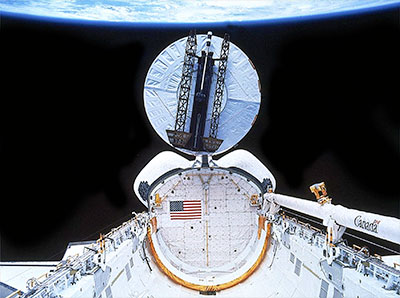Update, Sept. 24, 2015: The final commanding of Leasat 5 was completed at 18:25:13 GMT after 25.5 years of service.In this era of disposable technology, when the latest smartphone becomes passé within a matter of months and companies are innovating to bring us the next, newest, fastest, greatest gadget that we must have now, it's almost refreshing to take a moment and recognize the latest milestone here at Intelsat. On Jan. 9, 2015, the Leasat 5 [Syncom IV-F5] satellite marked 25 years of useful service in orbit.
L5, as it is known, is one of the two last "spinner" satellites in the Intelsat fleet. (The other is Intelsat 603 of storied fame.) Spinners are cylindrical satellites that were built from the 1960s through the 1980s.
Robert Cardoso, Director of Engineering Services at Intelsat's Long Beach (California) Operations Center noted, "I've been responsible for L5 for the last 10 years or so and was involved in several of the other LEASATs (1-4) since I started with Hughes in 1990. For me the best thing I can say about L5 is how easy it is to operate and how great the design was for its time. L5 has some on-board computing, which other spinners didn't have when L5 was launched. The satellite is remarkably stable and requires very little maintenance from ground operators."

Other notable facts about this long-serving bird, built by Boeing, include that it was launched into orbit on Jan. 9, 1990 aboard the Space Shuttle Columbia [STS-32] and deployed from the space shuttle the next day. In October 1997, L5 was scheduled to be shut down after completing a customer contract, but at the last minute it was restored to service.
In all, L5 has had a varied and useful life for the last 25 years, reliably serving missions for customers in the U.S. and Australia. It is scheduled to be deorbited this year.
Just in case you think that kind of longevity is an echo of the past, keep in mind that Intelsat's satellites are designed to serve customers for 15 years or longer — and, on average, ours have outlasted their predicted life by several years or more. That means that the technology we are designing today will serve customers' needs — and their customers' needs – for decades to come.
Now that's a testament to enduring technology if ever there was one.












